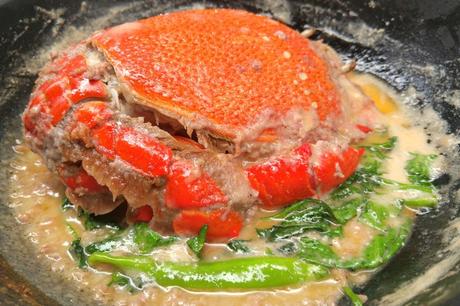
If you're following me on , there's a chance you've seen posts of huge crabs. These pink-red deep-sea crabs are called curacha (Ranina ranina) which are commonly found in Zamboanga.
Since it was in season, my uncle sent us some curacha as well as packs of Zamboanga's famous Alavar sauce which we shared with our relatives and friends. Obviously, our relatives are familiar with curacha and they know how to prepare it. Our friends, on the other hand, were very surprised at the size. And because of the color, they initially thought it was already cooked.
This hybrid crustacean is usually big and brightly colored than the average crab. It is also tasty and flavorful on its own. Interested to know how to cook one? There are actually many ways but here's how we cook ours.
Recipe 1: Halabos na Curacha
As mentioned, this crab is tasty and flavorful. To bring out more of its flavor, simply place the curacha in a wide pan or wok. Add a little water and salt then cook until dry.
*Halabos - to steam in salt and little or no water except that which clings to the crustaceans until dry. This is usually done for shrimps and crabs.Recipe 2: Curacha with Alavar Sauce
In a wok or wide pan, cook the curacha in a little water with a slice of ginger. Once done, remove the ginger and pour in water and the Alavar Sauce. Boil it for 5 minutes then remove the curacha. Simmer the sauce until thick then pour it on top of the curacha.

Recipe 3: Ginataang Curacha
First you need to prepare your gata or coconut milk which is extracted from a freshly grated mature coconut. Take note that we will be using the first pressing (kakang gatâ) of coconut milk which is thicker as well as the second pressing which is thinner.
Place the curacha in a wide pan or wok and add in two tablespoons of alamang as well as the second pressing of coconut milk. When it's boiling, carefully add in the first pressing. Make sure that you constantly stir the mixture. Once cooked, add in some vegetables. We used kangkong as well as siling haba for a little spice. Viola!
*Ginataan - anything (fish, shellfish, vegetables, sweets) cooked in coconut milk (gata).*Reference: A Quick Guide to Filipino Food & Cooking, Cris C. Abiva
Happy cooking and eating!
(Visited 1 times, 6 visits today)

